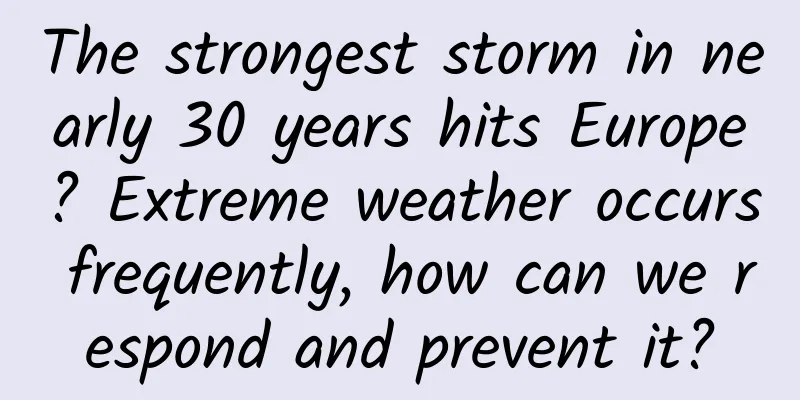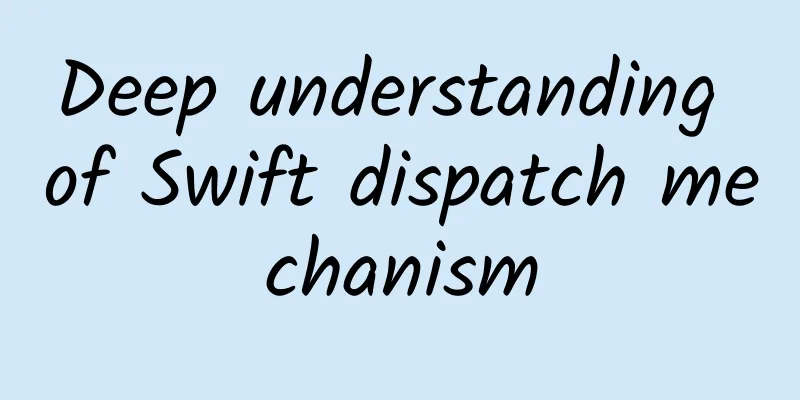The strongest storm in nearly 30 years hits Europe? Extreme weather occurs frequently, how can we respond and prevent it?

|
On February 18, the Atlantic storm "Eunice" hit many European countries including the United Kingdom, Germany, the Netherlands, Belgium, etc., causing many deaths, and leading to the cancellation of a large number of flights, suspension of train and ferry services, and thousands of people suffering from power outages. Huge waves hit the embankment in Blackpool, England, on February 18. Storm Eunice hit many parts of the UK on the 18th. On the Isle of Wight in southern England, gusts exceeded 196 kilometers per hour, breaking the record in England. According to local media reports, the storm has caused three deaths in England. Photo: Xinhua News Agency The British Meteorological Office issued a red storm warning, reminding people to avoid going out. European meteorologists said that "Eunice" may be the strongest storm the UK has encountered in nearly 30 years. 01. How strong is “Eunice”? What does a wind speed of 196 kilometers per hour mean? In my country, tropical cyclones are generally classified into tropical storms, typhoons, severe typhoons, and super typhoons. Gusts exceeding 196 kilometers per hour are about 54.4 meters per second according to my country's general standards, which is equivalent to a typhoon level of 16, which is a super typhoon level. Experts predict that this may be the strongest and most destructive storm the UK has experienced in nearly 30 years. At 11am on February 18, the Met Office issued a red warning for the highest level of storms, covering the coastlines of Devon, Cornwall and Somerset, as well as South Wales. Just a few hours later (at 4am local time), the Met Office issued a second red warning, covering most of southeast England, and this was the first time a "red warning" was issued in the British capital, London. On the Met Office's warning system, a red alert means "hazardous weather is expected which is likely to cause a threat to life, travel and energy supplies may be disrupted to a significant extent and there is the possibility of extensive damage to property and infrastructure." In addition to the UK, the storm also hit large parts of northern Germany, where a red alert was declared and later lifted; the Netherlands issued a red weather warning, hundreds of flights were canceled and train services were suspended. 02. What is the impact of “Eunice”? It can be said that wherever it goes, there is a mess! Millions of homes and businesses in Europe lost power, and transportation networks were thrown into chaos. The roof of the London O2 Arena was torn off by strong winds, exposing part of the internal structure of the arena. Danish ferry operator United Shipping Company announced on the 18th that due to the strong winds and waves, it would suspend ferries between Dover, England and Calais, France, across the English Channel. According to the British Meteorological Department and related media, the strong winds and rainfall brought by "Eunice" caused at least 9 deaths in the UK, damaged power facilities in many places, interrupted transportation, damaged a large number of houses and buildings, and felled trees. More than 200,000 households lost power and more than 400 flights were canceled. In addition, at least 12 people died in Ireland, the United Kingdom, Belgium, the Netherlands and Germany due to the strong storm. my country's Central Meteorological Observatory also predicted the subsequent weather trend: In the next two days, there will be a westerly low-pressure system moving eastward from the North Atlantic to Western Europe. Compared with the strong storm "Eunice" on February 18, the new system has a more northerly impact range and is weaker in intensity. There will still be 6 to 7 winds with light precipitation in western and southern Britain, the English Channel, and the northern coast of Western Europe. my country's FY-3D satellite monitoring image on February 19, 2022 (bureau map) Photo/National Satellite Meteorological Center my country's FY-3D satellite monitoring image on February 19, 2022 (large-scale image) Photo/National Satellite Meteorological Center 3. Why is “Eunice” so strong? From the cause point of view, it is two forces that are "entangled". Before Eunice, the UK had not yet recovered from the impact of Storm Dudley. In fact, the series of storms that have hit Europe recently are all extratropical cyclones. This type of cyclone is very powerful and basically dominates the weather process in western Europe in winter. The strongest cyclones have huge social and economic impacts on the coast due to the strong winds and storm surges they bring when they land. The "temperament" of a temperate cyclone is different from that of a tropical cyclone. It is the product of the fierce confrontation between cold and warm air. It appears along with the front. Sometimes 2 to 5 temperate cyclones will form successively on the same front, advancing from west to east. The emergence of this European storm group is the result of a fierce confrontation between two forces over the Atlantic Ocean: cold air and warm air. So where do these two forces come from? Affected by global warming and the La Niña event, the sea surface temperature in the North Atlantic has been abnormally warm since February, and the Atlantic subtropical high pressure has been abnormally strong. At the same time, the polar vortex deviated towards the Atlantic Ocean and the European continent, forming a relatively stable front in the mid- and high-latitudes of the Atlantic Ocean, creating very favorable conditions for the formation of extratropical cyclones. The cold air mass from the polar region quickly moved southward into the westerly belt, which was conducive to the stability and continuous development of the cyclone. The southern part of the UK was continuously affected by the abnormal westerly winds in the south of the cyclone system, which eventually formed a strong storm event. In addition, the reason why this storm caused such great damage is probably related to a "scorpion" hovering over the eastern Atlantic Ocean. The "scorpion" is a stinging jet stream, a thin, narrow stream of air that can form inside a storm and produce strong winds over an area of up to 100 kilometers. A stinging jet stream resembles a scorpion in the sky because it moves with the storm like the sting on the scorpion's tail. A strong stinging jet stream acts like a storm production line, constantly producing new storms every day or two. It is the core of strong winds that sometimes form in rapidly intensifying low pressure areas and extend toward the ground. Jet streams occur in some types of extratropical cyclones. These jet streams form about 5 km above the surface and then descend to the southwest side of the cyclone, near its center, accelerating as they do so and bringing with them fast-moving air from the upper atmosphere. They can last from 1 to 12 hours. The unpredictability and relative rarity of stinging jets make storms more dangerous. A classic example was the Great Storm of 1987, which killed 18 people in the UK alone and brought down 15 million trees in winds exceeding 160 km/h. On February 18, a large tree was blown down in London, England. Source: Xinhua News Agency 4. Will there be more severe storms in the future? In recent years, extreme weather and climate events have occurred frequently, and there have been frequent reports of severe weather attacks in Europe. So will severe storm events become more frequent in the future? Last year, a study published in Geophysical Research Letters analyzed heavy rainstorms in Europe and found that the frequency of heavy rainfall storms in Europe in the future may increase significantly due to climate change. Scientists estimate that by the end of this century, the frequency of these slow-moving storms over land may increase 14 times. The changes in extreme storms are significant and will lead to an increase in the frequency of devastating floods across Europe. Heavy rainfall from storms can cause waterlogging, flooding, or other devastating effects. Projections of future climate show that by 2100, the proportion of cyclones with "thorny jet" precursors will increase to 45%, while the proportion of explosive cyclones with "thorny jet" precursors (cyclones in which the central pressure of the cyclone drops by more than 24hPa within 24 hours) will increase from 9% to 14%. This indicates that under future climate conditions, the risk of wind-related explosive cyclones with "thorny jet" precursors in Europe will increase significantly. Image source: Tuchong Creative (The picture is from the copyright library, and the picture content is not authorized for reproduction) Previously, data from the International Disaster Database also showed that after 2000, humans suffered between 300 and 400 extreme weather disasters each year, including floods, storms, droughts, extreme temperatures, and wildfires. That is to say, on average, there is an extreme weather disaster almost every day around the world! Note that this is an average of every day! Note that this figure is still increasing year by year! Note that there is no region in the world Protected from extreme weather conditions! 5. How should we prepare for extreme weather or natural disasters? First, we need to understand the current status of government disaster management, such as the meaning of warning information issued by the government, what response measures should be taken for different warning information, and the distribution of nearby disaster shelters. Second, we need to increase our awareness and comprehensiveness of natural disasters. For example, residents in northern China also need to learn some common sense about rainstorm disasters. The third is to strengthen awareness of disaster and risk prevention in daily life. The Ministry of Emergency Management of China has issued a "National Basic Version of the Recommended List of Household Emergency Supplies". Please collect! Finally, I would like to remind everyone that almost all professional rescue teams, whether fire rescue teams or armed police forces, cannot reach the injured within 3 minutes. Therefore, when responding to emergencies, the most timely, effective and loss-reducing measure is for citizens to launch rapid response rescue operations at the first time and on the first scene. This rescue operation includes evacuation, self-rescue and mutual rescue. First is evacuation, then self-rescue. Only when you are safe can you lend a hand to help others escape the disaster. Comprehensive sources: National Emergency Broadcasting, Xinhuanet, China Meteorological Administration Meteorological Publicity and Science Center, Shangguan News, CCTV.com, Shanghai TV News Comprehensive Channel "News Square" official WeChat, etc. expert: Huang Bin, Chief and Senior Research Engineer at the National Meteorological Center Liu Yunyun, Chief and Senior Research Engineer at the National Climate Center Wang Guofu, Director of the Meteorological Disaster Risk Management Office and Researcher of the National Climate Center of the China Meteorological Administration Luo Yali, researcher at the Chinese Academy of Meteorological Sciences |
<<: Don't put these 5 types of food in the refrigerator, they will go bad faster
>>: Problematic cribs named! How can you buy a safe and reliable crib?
Recommend
A first look at Swift 2.0: Notable new features
In the blink of an eye, Swift is already over a y...
360 application market promotion mobile display style!
Mobile APP ads are marked with the word "Pro...
Domestic mobile phones have entered the wrong path of "cost-effectiveness"
[[143498]] When it comes to domestic mobile phone...
Using Cocoa Layout Instrument to inspect automatic layout
Some time ago, MarkD discussed with us many usefu...
A masterpiece of physics, buried in the unvisited literature of meteorology
Years later, physicists would speak longingly of ...
Chevrolet Equinox overseas price starts at 168,000
Recently, Chevrolet announced the price of the 20...
Cycling almost got your throat cut! Spring is here, be sure to pay attention to this!
The spring breeze blows on our faces. When we wal...
Dong Mingzhu "debates" with post-90s: I haven't heard of them being dissatisfied with the startup photos
You thought it was an oil painting, but it was ac...
Director of Steve Jobs documentary calls Apple 'rude and callous'
[[130146]] Apple is not interested in participati...
Many countries may face EU prosecution for alleged bias towards the public
According to foreign media reports, after the Vol...
The evolution of AI technology is underestimated by the public
ChatGPT, recently launched by OpenAI, has become ...
An event operation and promotion plan that can be used directly!
Do you still remember the NetEase opening class t...
Will the new Macbook's USB-C explode if you connect it incorrectly? You need to review your junior high school physics
Why did some consumers buy the wrong USB Type-C d...
In the US presidential election, how do social media platforms show their power?
In the end, Trump won the US presidential electio...
“Top Ten Scientists of 2021”, the soul figure of China’s Mars program is on the list!
Nature Cover▲ *The pictures and characters in thi...









